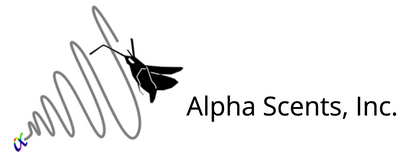CBB ASSASSIN

HAD A POOR CUP OF COFFEE? BLAME THE BEETLES!
Did you know that the Coffee Berry Borer is the only animal that lives exclusively off coffee?
Coffee fields and beans can benefit from our Breeding stations which capture the Square-neck grain beetles, The CBB Assassin Trap can ensure you never have a bad cup of coffee.
The square-necked grain beetle, Cathartus quadricollis, is a predator of two significant crop pests in Hawaii: the coffee berry borer, Hypothenemus hampei, in coffee and the tropical nut borer, H. obscurus in macadamia nut.
A predator breeding station consisting of a screened and sheltered enclosure containing food (250 g of cracked corn: cornmeal and pheromone lure was developed to augment predator numbers in coffee and macadamia fields. In the laboratory, stocking a breeding station with 100 C. quadricollis resulted in production and dispersal of about 10,000 adults per station over a four-month period at 25º C.
In field tests, use of the pheromone lure were placed in breeding stations in a coffee field to attract naturally occurring wild adults over a 2 week period where they both produced roughly 3,000 adults per station over a five-month period. The predator breeding station was an efficient way to multiply C. quadricollis numbers in the field and could be used to augment biological control of the coffee berry borer in coffee and tropical nut borer.
The coffee berry borer (CBB, is the most serious insect pest of coffee worldwide, with crop loss exceeding US$500 million annually. CBB was first discovered in Hawaii in 2010 on the Kona side of the island of Hawaii, where there are about 800 small coffee farms on 1170 ha, but it has since spread to the other islands. Current levels of coffee berry borer infestations average 15–20%, which causes yield loss, reduces quality and price, and increases costs . If left uncontrolled, CBB can damage > 90% of coffee beans at harvest.
Similarly, the tropical nut borer (TNB), causes significant damage to macadamia nuts in Hawaii. Macadamia is grown in Hawaii on about 7300 ha and had an estimated farm gate value of $49 million in 2019–20. The estimated crop loss from TNB is 6–14 %, but it also introduces mold on the kernels, which may significantly increase losses. Both CBB and TNB are cryptic because they complete their life cycles inside the berry or nut, making control difficult.
In coffee, CBB control relies on well-timed application of the biopesticide Beauveria bassiana, together with strip picking of coffee berries at the end of harvest. No control measures are applied for TNB control in macadamia, but frequent harvests can limit damage. Therefore, its role in CBB management will be to suppress population growth in unharvested coffee between seasons and in abandoned coffee. A system for farmers to sustainably rear C. quadricollis on-farm using breeding stations containing C. quadricollis pheromone lures might facilitate wider grower adoption of the predator augmentation program. The commercial availability of the lures and breeding stations at Alpha Scents, Inc. (Canby, OR) make use practical.



